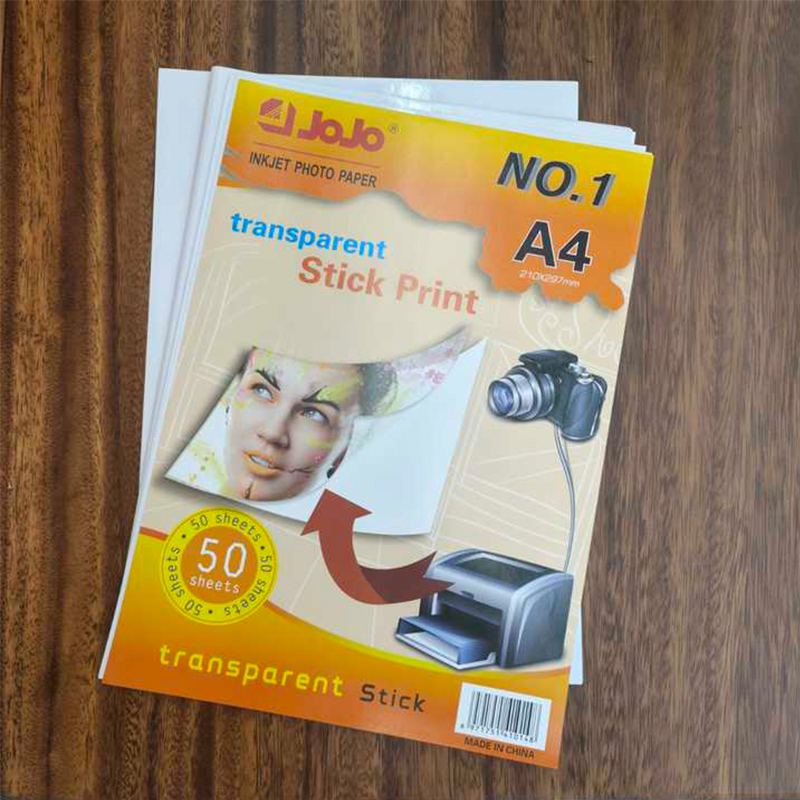If you need any help, please feel free to contact us
Soft Touch Transfer Paper For Apparel Design
Among the different types of transfer papers available, soft touch transfer paper has become a popular choice for designers who seek a smooth, flexible finish that enhances the comfort and aesthetic of garments. This article explores the applications, benefits, and technical aspects of soft touch transfer paper in apparel design, with insights into related materials such as multifunctional thermal transfer paper, thermal transfer paper for t shirts, and RC glossy photo paper.

Understanding Soft Touch Transfer Paper
Soft touch transfer paper is a specialized thermal transfer medium designed to impart a soft, more fabric-like feel to printed designs. Unlike traditional heat transfer papers that may produce a thicker or more plasticky layer on garments, soft touch paper ensures that prints are lightweight, breathable, and comfortable against the skin. This characteristic makes it particularly suitable for casual wear, sportswear, and any apparel where comfort is a key concern.
The material composition of soft touch transfer paper typically includes a fine coating that facilitates ink adhesion and transfer efficiency while maintaining flexibility after application. The softness of the finished print arises from both the paper's coating technology and the thermal adhesive used during the heat pressing process.
Applications in Apparel Design
One of the primary uses of soft touch transfer paper is in customizing t-shirts, a staple item in apparel design. The ability to transfer detailed graphics, logos, and text onto cotton, polyester, or blended fabrics makes soft touch transfer paper a versatile option for small-scale production, on-demand printing, and even mass customization.
Beyond t-shirts, this transfer paper is also well-suited for hoodies, sweatshirts, and sports jerseys, where the balance of durability and comfort is critical. It is particularly favored when producing limited edition apparel or personalized garments, as it allows designers to experiment with a variety of colors and designs without the need for costly screen printing setups.
Multifunctional Thermal Transfer Paper: A Broader Perspective
While soft touch transfer paper is specialized for softness and comfort, the market also includes multifunctional thermal transfer paper that offers broader compatibility with different printing technologies and substrate types. Multifunctional papers can be used for a wider range of fabrics and sometimes on non-textile surfaces, providing greater flexibility for designers and manufacturers.
These papers typically support multiple ink types, including pigment and dye inks, and work effectively with various printing equipment such as inkjet and laser printers. Multifunctional thermal transfer paper enables apparel producers to streamline operations by reducing the need for multiple paper types for different products. Though these multifunctional papers may not always deliver the same softness as dedicated soft touch transfer papers, they provide a reliable compromise between print quality and usability.
Thermal Transfer Paper for T Shirts: Key Features
When selecting thermal transfer paper for t-shirts, several technical factors come into play:
Adhesion Quality: The paper must allow the ink to bond firmly to the fabric without peeling or cracking after repeated washes. Adhesion is affected by the paper coating, the type of ink, and the heat pressing parameters.
Color Reproduction: Accurate and vivid color reproduction is essential for designs that rely on photographic images or intricate details. High-quality thermal transfer paper can reproduce colors consistently across batches.
Fabric Compatibility: Different fabrics interact with transfer papers uniquely. While cotton and polyester are common, blends and synthetic fibers may require specific types of transfer paper for good results.
Print Feel: This is where soft touch transfer paper stands out by providing a comfortable, flexible print surface, as opposed to heavier or glossier finishes.
The Role of RC Glossy Photo Paper in Transfer Printing
Though primarily used for photographic printing, RC glossy photo paper has an indirect relationship to thermal transfer printing. RC (Resin Coated) glossy photo paper features a resin layer that enhances water resistance, durability, and sharpness of prints. Some thermal transfer papers are developed with similar resin-coated layers to improve ink absorption and transfer quality.
In apparel design, images printed on RC glossy photo paper can sometimes be used as reference or proof prints before transferring designs to fabric. Additionally, understanding the properties of RC glossy photo paper helps in selecting coatings for thermal transfer papers that require clear, sharp, and durable images.
Practical Considerations for Using Soft Touch Transfer Paper
To achieve the ideal results with soft touch transfer paper, apparel designers and printers should pay attention to the following:
Heat Press Settings: Temperature, pressure, and dwell time should be calibrated according to the paper manufacturer's recommendations to ensure strong adhesion without damaging the fabric.
Ink Selection: Using compatible inks that bond well with the transfer paper coating is critical for durability and color fidelity.
Pre and Post-Treatment: Proper fabric preparation, such as pre-washing and post-press cooling time, can improve the longevity and feel of the transferred design.
Washing and Care Instructions: Educating customers about washing conditions, such as cold water and gentle cycles, helps maintain print quality over time.
Soft touch transfer paper offers a valuable option in apparel design by providing prints that combine vibrant visuals with a comfortable, flexible feel. While specialized, it exists alongside multifunctional thermal transfer paper and other printable materials like RC glossy photo paper, contributing to a diverse ecosystem of digital printing consumables. For designers focused on creating wearable art that feels as good as it looks, understanding these materials and their proper application is essential.

 English
English Español
Español 中文简体
中文简体 Português
Português

